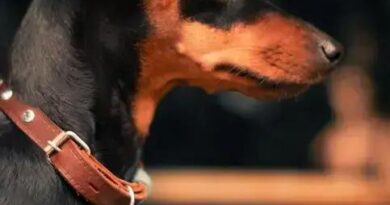Curiosities about the Tibetan Mastiff: Discover Fascinating Facts
The Tibetan Mastiff is a breed surrounded by myths and legends. Curiosities about the Tibetan Mastiff include its ancient origins and impressive characteristics. In this article, we’ll delve into the fascinating world of this majestic dog, providing insights and tips for potential and current owners.
The Origins and History of the Tibetan Mastiff
The Tibetan Mastiff, native to the Himalayan region, has a rich and complex history. This ancient breed dates back thousands of years and is considered one of the world’s oldest and least genetically disturbed dog breeds.
Initially bred by the nomadic cultures of Tibet, China, Nepal, and India, these dogs served as guardians for livestock and property. Their imposing size and fearless nature made them excellent protectors against predators such as wolves and leopards.
Marco Polo, the famous Venetian explorer, documented his encounters with the fierce Tibetan Mastiffs during his travels. He described them as being as tall as a donkey and very powerful. The breed’s reputation for guarding and loyalty transcends centuries and geography.
By the early 19th century, the breed caught the attention of Western explorers and missionaries. Tibetan Mastiffs were brought to Europe as gifts or trade and quickly became a symbol of status among the elite. Queen Victoria of England was gifted a Tibetan Mastiff, solidifying the breed’s introduction into Western society.
To this day, the breed maintains its cultural significance in Tibet. They are often seen symbolizing protection and luck in Tibetan art and folklore. Despite the changing times, the essence of the Tibetan Mastiff’s role as a guardian and companion remains unchanged, reflecting the deep-rooted history and resilience of this majestic breed.
Unique Characteristics of the Tibetan Mastiff
Tibetan Mastiffs are renowned for their unique features. They possess a majestic, lion-like mane that encircles their face, giving them a regal appearance. Their dense double coat keeps them warm in harsh climates, ideal for the cold Tibetan plateau.
These dogs have a strong, muscular build, often much larger than other breeds. Their powerful bodies are complemented by a thick tail that curls over their back. Impressively, Tibetan Mastiffs can weigh up to 150 pounds, combining bulk and agility.
In terms of temperament, Tibetan Mastiffs are fiercely independent and protective. They are known for their loyalty and strong guardian instincts, often being aloof with strangers but extremely affectionate with their family. Their protective nature makes them excellent watchdogs, ever alert and ready.
Tibetan Mastiffs are also highly intelligent, though they can be quite stubborn. Positive reinforcement techniques work best when training these dogs, as they respond well to trust and respect.
Another remarkable trait is their nocturnal activity; they tend to be more active at night, mirroring their historical role as nighttime guardians. Their deep, resonant bark is a deterrent to potential threats.
Caring for Your Tibetan Mastiff: Tips and Tricks
The Tibetan Mastiff is a large and powerful dog breed with a rich history. Originating from the Himalayan region, these dogs were traditionally used as guard dogs.
Appearance: Tibetan Mastiffs have a majestic appearance with a thick double coat, bushy tail, and a mane-like fur around their neck which gives them a lion-like look.
Temperament: These dogs are known for their protective nature. They are loyal and often reserved with strangers, making them excellent guard dogs.
Health: Tibetan Mastiffs are generally healthy but can be prone to genetic issues such as hip dysplasia and hypothyroidism. Regular vet check-ups are crucial.
Exercise Needs:
Despite their size, Tibetan Mastiffs do not require excessive exercise. However, daily walks and mental stimulation are important to keep them happy and healthy.
Diet:
A balanced diet is essential. These dogs thrive on high-quality commercial dog food or a well-prepared homemade diet. Clean, fresh water should always be available.
Grooming:
Regular grooming is necessary to maintain their thick coat. Brushing them several times a week will help reduce shedding and keep their coat in top condition.





